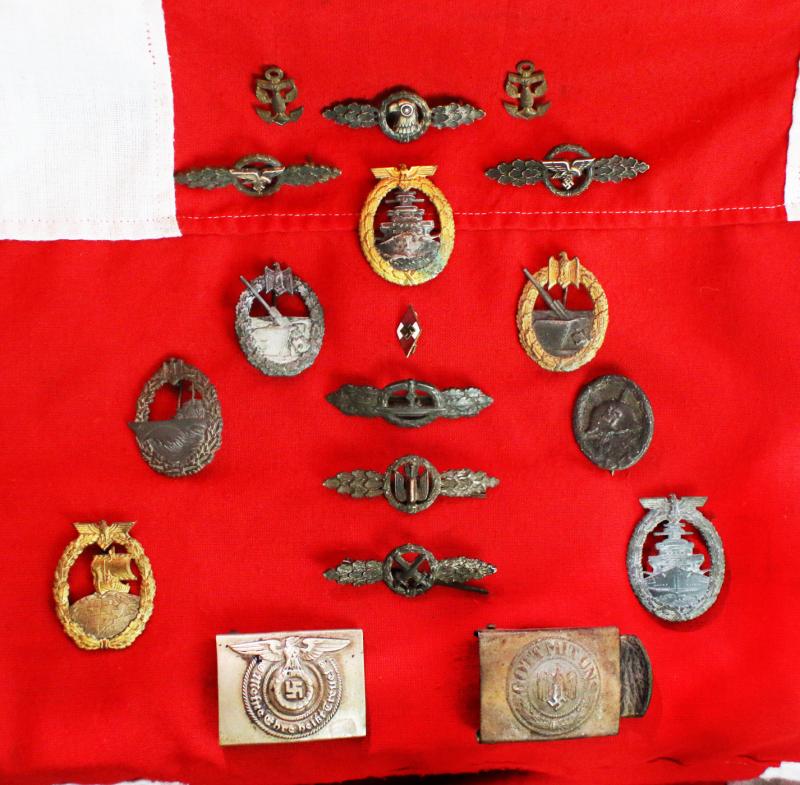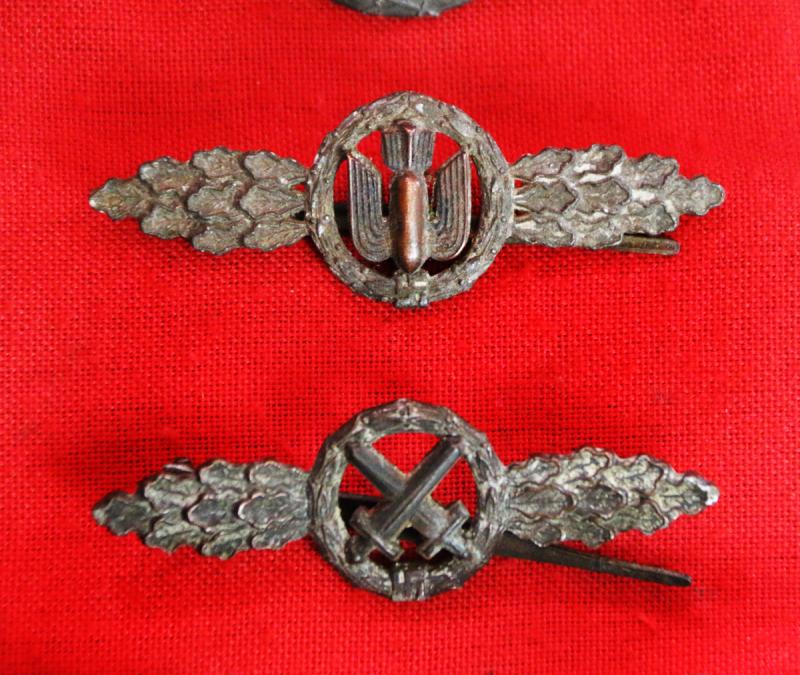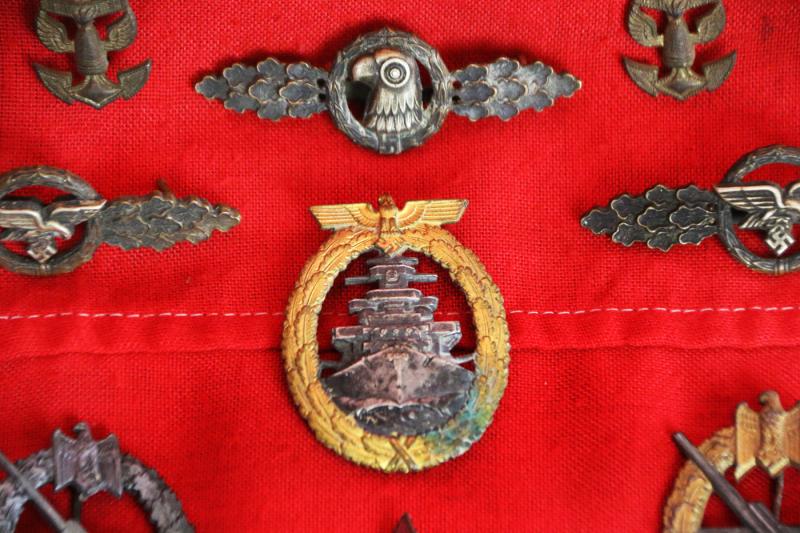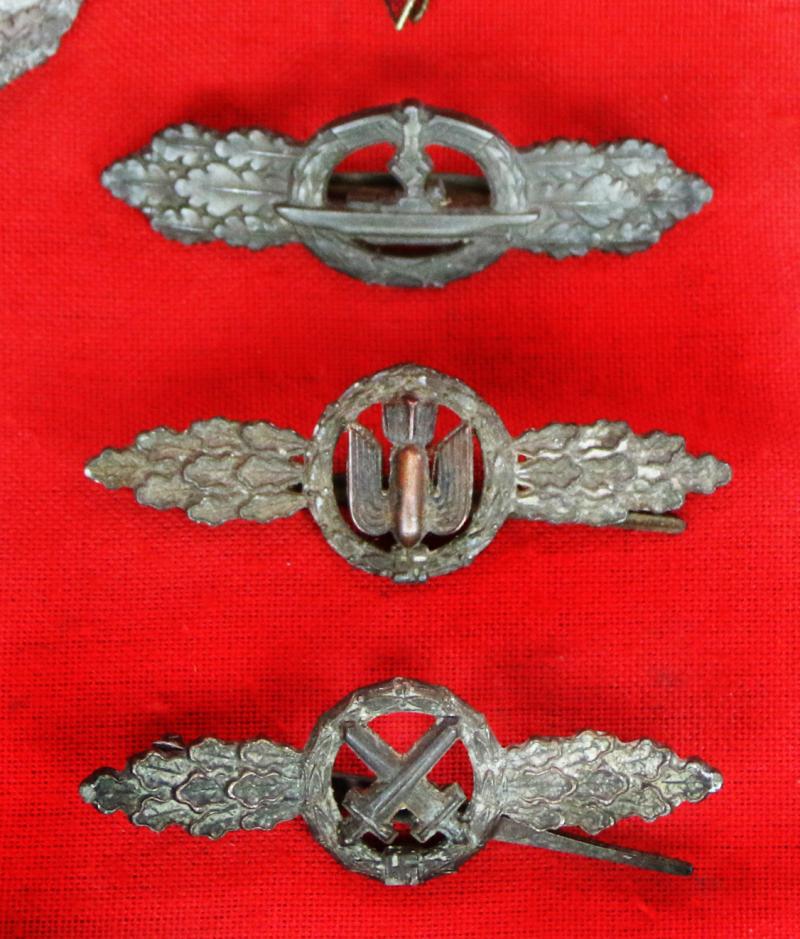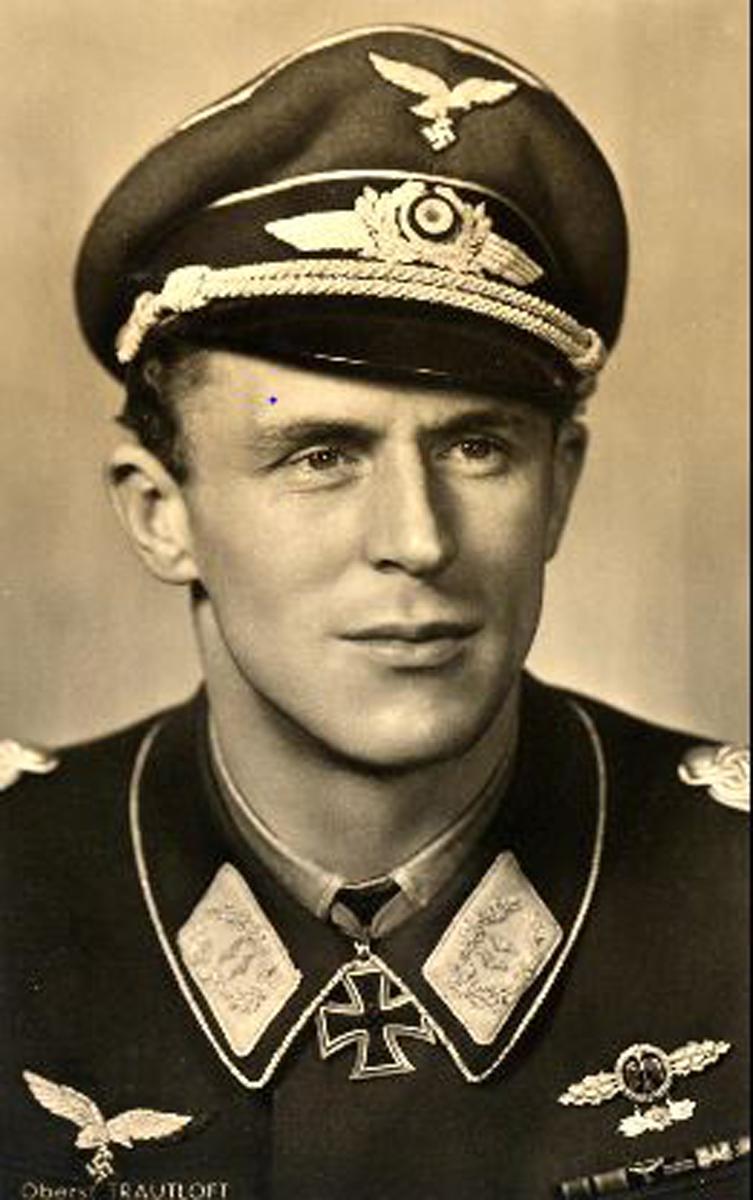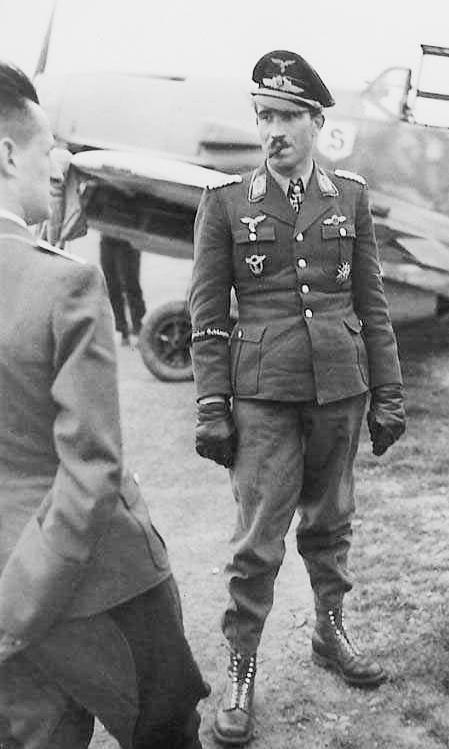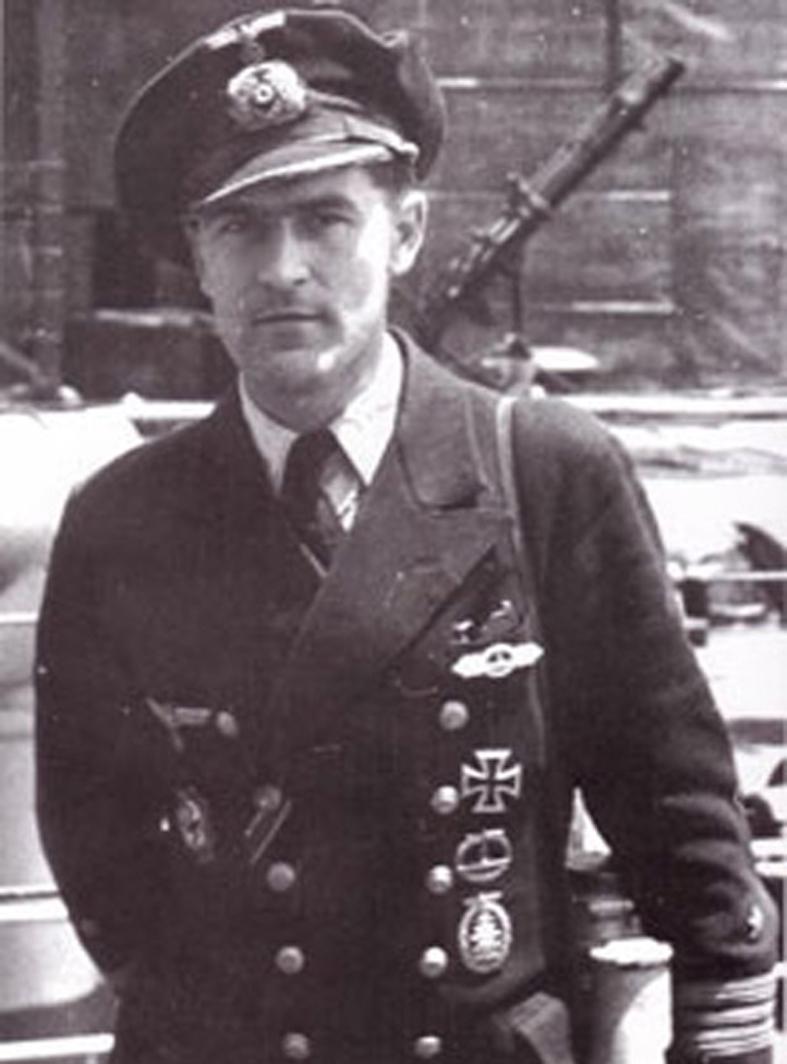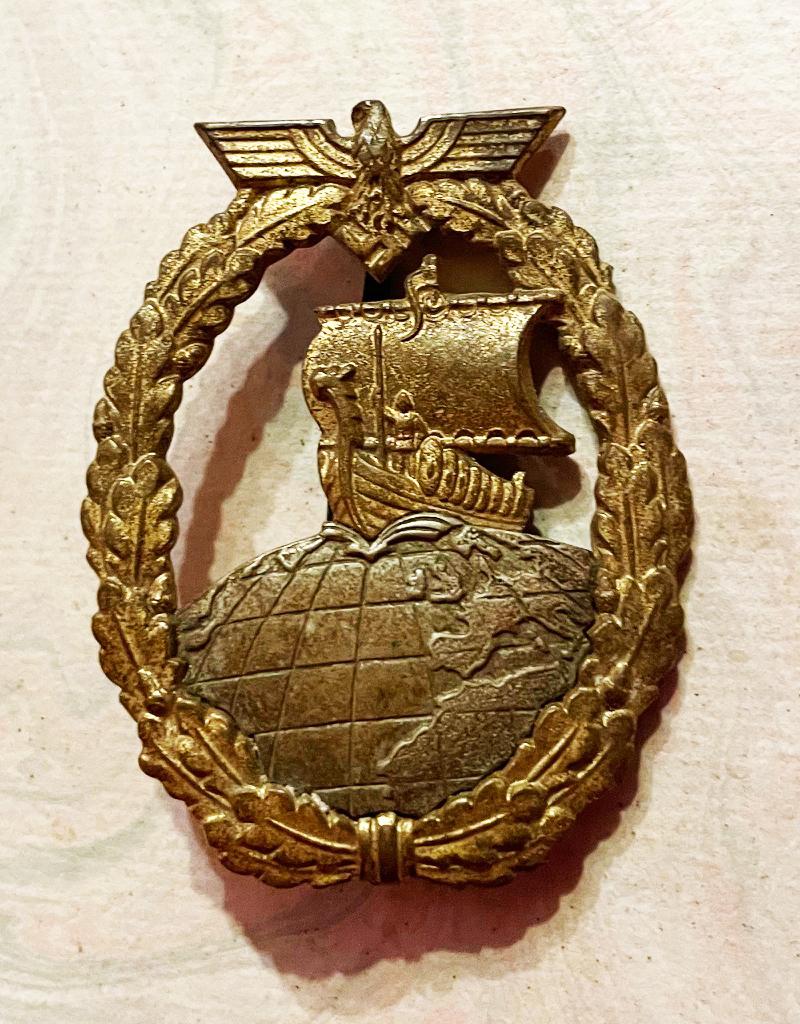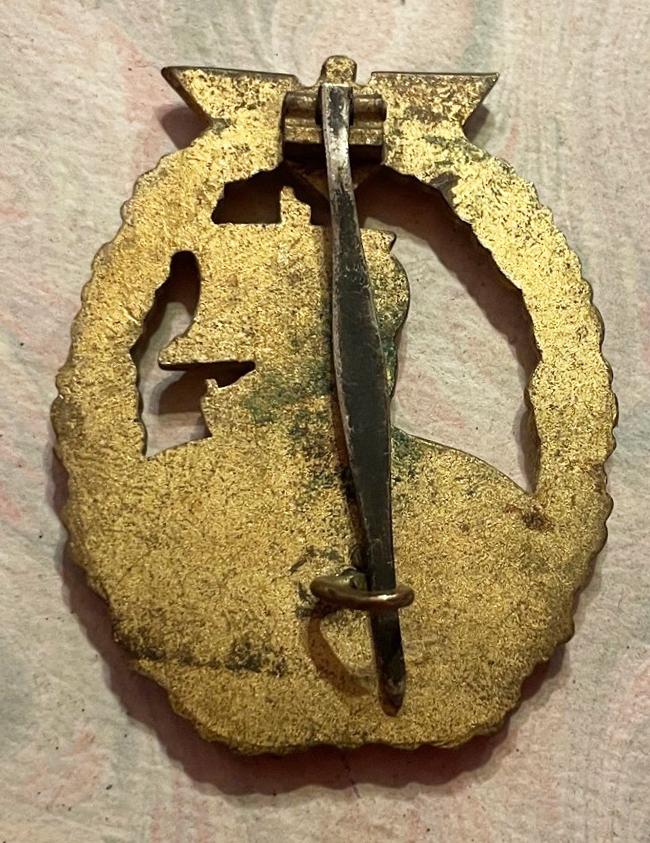A “Kriegsabzeichen für Hilfskreuzer” (Auxiliary Cruiser War Badge From One Of Ian Fleming’s Naval Intelligence Section’s So Called ‘Red Indians’ 30 Commando Special Engineering Unit
A “Kriegsabzeichen für Hilfskreuzer” (Auxiliary Cruiser War Badge). See photos 9 and 10 in the gallery.
Bomb disposal sections of special engineering units in wartime Europe {so called Fleming’s “Red Indians” } were a vital part of clandestine warfare, and all parts of the units combat service were then trained in recognising enemy mines, booby traps, handling of explosives, demolitions, counter-demolitions, bomb disposal, and combined with recognition of enemy uniforms and equipment for intelligence gathering. Reporting all elements of their findings back to CoCO, and by them to the Admiralty. Fleming referred to such brave men as his ‘Red Indians’. see Casino Royale for reference.
All the badges, clasps and buckles are offered for sale separately. A “Kriegsabzeichen für Hilfskreuzer” (Auxiliary Cruiser War Badge). Although a relatively innocuous title the German Auxiliary Cruisers were also known as Hitler's Secret Pirate Fleet: The Deadliest Ships of World War II, a formidable secret weapon of maritime warfare in WW2. These few merchant ships, were called 'commerce raiders', that concealed incredible hidden firepower that could easily sink and destroy allied warships that came too close while the German vessel was pretending to be a harmless fishing or merchant vessel etc. in distress. Within their first year of operation seven such merchant commerce raiders sunk 80 allied ships.
At first the Kriegsmarine had no plans to use commerce raiders, despite their use in the First World War and interwar thought about their use. Armed merchant cruisers of the type used by the British were too big, too hard to disguise and keep supplied with fuel. Ordinary merchant ships were a better prospect, especially those with a long range and were easier to alter to look like neutral and Allied ships to deceive their targets and Allied warships. Planning began soon after the declarations of war and by the end of September a first wave of six ships had been identified.
Each ship would need a crew of 284 men, six 150 mm guns, four 20 mm anti-aircraft guns, four torpedo tubes, provision for 400 mines and two seaplanes aircraft. The ships needed to be at sea for a year, cruising for 40,000 nmi (74,000 km; 46,000 mi). The first raider was to sail in November 1939 but it took until 31 March 1940 before the first raider sailed and July before all of the first wave had departed. By March 1941 the seven raiders in action had sunk or taken 80 ships of 494,291 gross register tons (GRT).
The British navy had the very same secret combat vessels called Q-Ships during WW1
The WWII German naval campaign against Allied shipping was not waged only with naval vessels. Eleven merchant ships were also specially equipped by the German Navy with a variety of anti-ship weapons. These armed ships, disguised as peaceful merchant vessels, patrolled shipping lanes. To recognize the bravery of the crews of these vessels, the German Navy commander Grossadmiral Erich Raeder introduced a special award, “Kriegsabzeichen für Hilfskreuzer” (Auxiliary Cruiser War Badge), on April 24, 1941. The badge was designed by Ernst Peekhaus and featured a Viking ship sailing on a northern hemisphere, surrounded by a wreath, and surmounted by a German national eagle and swastika emblem. They were made in silver, Tombak, and zinc. The entire badge was gilt with the exception of the globe, which had a gray finish. The globe could be integral to the badge, or could be a separate piece, affixed with a single rivet. The badge was awarded to the crews of ships that completed successful long-range voyages. It could also be awarded for exceptional leadership on a voyage and was automatically awarded to any sailors wounded in action on such a vessel. Because there were not many of these disguised merchant vessels, the Auxiliary Cruiser Badge was made in very limited numbers, likely, not more than 2,500, and likely most of those ended up at the bottom of the seas and oceans with their drowned owners still within their sunken vessels.
Pinguin was once of the most infamous of the small fleet of German auxiliary cruisers (Hilfskreuzer) which served as a commerce raider in the Second World War. The Pinguin was known to the Kriegsmarine as Schiff 33, and designated HSK 5. The most successful commerce raider of the war, she was known to the British Royal Navy as Raider F. The name Pinguin means penguin in German.
At first the Kriegsmarine had no plans to use commerce raiders, despite their use in the First World War and interwar thought about their use. Armed merchant cruisers of the type used by the British were too big, too hard to disguise and keep supplied with fuel. Ordinary merchant ships were a better prospect, especially those with a long range and were easier to alter to look like neutral and Allied ships to deceive their targets and Allied warships. Planning began soon after the declarations of war and by the end of September a first wave of six ships had been identified.
Each ship would need a crew of 284 men, six 150 mm guns, four 20 mm anti-aircraft guns, four torpedo tubes, provision for 400 mines and two seaplanes aircraft. The ships needed to be at sea for a year, cruising for 40,000 nmi (74,000 km; 46,000 mi). The first raider was to sail in November 1939 but it took until 31 March 1940 before the first raider sailed and July before all of the first wave had departed. By March 1941 the seven raiders in action had sunk or taken 80 ships of 494,291 gross register tons (GRT).
See for ref; Duffy, James P. (2005). Hitler's Secret Pirate Fleet: The Deadliest Ships of World War II.
AUXILIARY CRUISER BADGE BY C.E. JUNCKER
An Auxiliary Cruiser Badge (Kriegsabzeichen für Hilfskreuzer) constructed of gilded and silvered tombak, the obverse consisting of an oval oak leaf wreath, surmounted by a Kriegsmarine eagle clutching a mobile swastika, around a central depiction of a Viking longship sailing over the Northern Hemisphere. This badge is the second to be offered from the collection. The reverse includes a block-style hinge banjo pin with a classic flat wire catch soldered directly to the badge, unmarked but attributed to C.E. Juncker. It has no damage or repairs in very good condition.
A highly desired pieces! all uncleaned unpolished, kept just as is, untouched and unmolested for the past 80 years
The brain child of naval commander Ian Fleming & Lord Louis Mountbatten, 30 {30AU} Commando, this wartime unit was a secret well kept for over 50 years after the war by the Official Secrets Act, some remains classified, see Reading. At the time, officially, they didn’t exist. The members of this unit were forbidden to discuss or document their activities, a pledge that many of the men kept even many years after the war was over, or even for their entire lives!
Due to the fact these men operated in very small groups on ‘need-to-know’ basis it is very difficult to get clear picture of everything they were doing.
Fleming’s/NID30AU secretary Miss Margaret Priestley (a history professor from Leeds University) played a vital role in the running and administration of 30AU and became his inspiration for Miss Petty Pettaval - the original character name that became Miss Moneypenny.
As revealed here for the first time!(6) (see Beau Bête)
Miss Preistley transferred over to NID30AU during the winter of 1943-44 from DNR - (Department of Naval Research) where she worked as a civilian, although there were obvious links between DNR and NID30AU as intelligence on enemy targets was collected for Fleming’s ‘Black List’.
Also Known as:
Fleming himself referred to the men of the unit as behaving like 'Red Indians'. (A reference he also used when referring to his character, James Bond, four times in his first novel Casino Royale. Which effectively makes this unit the ‘literary James Bond’s wartime unit’.)
Formerly:- (NID30 Command Office at Admiralty),
Special Engineering Unit.
'RED' Marines.
Latterly:- 30 Assault Unit,
30 Advanced Unit, 30AU
and incorrectly as 30th Assault Unit.
The number '30' was used for no better reason than it was NID/Miss Priestley’s Office Door number at the Admiralty. (Fleming’s Office was No. 39) 'Assault Unit' was 'overt' cover for the fact that they were intelligence gathering.
Date Founded: 30 September 1942
Date Disbanded: 26 March 1946
Date Reformed: February 2010 - 30 Cdo IXG
Mission When Founded:
The collection of technical intelligence and personnel from enemy headquarters and installations. Ahead of allied advances and before enemy could destroy it, to ‘Attain by Surprise’.
30 Commando consisted of Royal Marine, Army and Royal Navy elements that were organised into three Sections: No. 33, No. 34 and No.36 respectively. Initially code-named the Special Engineering Unit, the unit reported to the Chief of Combined Operations, though the Admiralty retained ultimate control of No.36 Section. No.35 Section was left vacant for the RAF to utilise but they never raised a troop to participate in 30 Cdo. Although they did supply intelligence officers and specific targets to pursue after D-Day for ‘Operation Crossbow’.
Unit members were given general commando skills and weapons training, and were then trained in recognising enemy mines, booby traps, handling of explosives, demolitions, counter-demolitions, recognition of enemy uniforms and equipment. Parachute training, small boat handling, recognition of enemy documents, search techniques including lock picking and safecracking, prisoner handling, photography and escape techniques were also taught.
A significant number of the initial recruits were formerly policemen. Although at least one ‘expert’ was recruited straight from prison, thought by the police to be the best safe-breaker in England at the time.
30 Cdo’s operational tactic was to move ahead of advancing Allied forces, or to undertake covert missions into enemy territory by land, sea or air, to capture intelligence, in the form of equipment, documents, codes or enemy personnel. 30 Cdo often worked closely with the Intelligence Corps' Field Security sections. More often than not each team consisted of two special operations Jeeps (As used by the SAS and 30AU) manned by one Naval Commander in possession of a ‘Black Book’ which listed targets from Ian Fleming’s famous ‘Black List’. The Naval Commander was the only man in each team who knew where and what the targets actually were. This Naval Commander was usually accompanied by at least one weapons expert or scientist who he relied on to evaluate the information or equipment they encountered. There were also usually at least six Royal Marines and one RM Officer whose main job was to do any fighting required and to keep the Naval Commander and any experts alive and out of trouble. (For details Reading section.)
The individual Sections served in all the Mediterranean and NW European operational theatres, usually operating independently, gathering information from captured facilities. The unit served in North Africa, the Greek Islands, Norway, Pantelleria, Sicily, Italy, and Corsica, 1942-1943 as 30 Commando.
s the Allies broke through 30AU split into many ‘Field Teams’ and these were responsible for capturing many and varied targets throughout Germany.
Team 2 under Curtis captured Prof. Helmut Walter, designer of the Me163 Rocket Plane and Midget Submarines at Kiel. (Kept by the British!).
Team 5 under USN Lambie captured Prof. Herbert Wagner (10) (Handed to US Agents) designer of the guided flying bomb Hs293, already used to sink HMS Egret and to kill over 1000 troops on HMT Rohna. He went on to work for the US Navy. He did not surrender in Bavaria with Dornberger and the von Braun brothers as the Allied military would have us believe. (2) (see Reading section).
The capture of Prof. Magnus von Braun (Martin) V2 fuel chemist. (Handed to US Agents). He did not surrender in Bavaria as the Allied military want us to believe. (see Reading for details)
The capture of the designer of the Nazi V2 (who went on to the NASA Saturn V), Prof. von Braun and his brother. (Some men were convinced they were some of the scientists they caught!) Did they surrender in Bavaria as the Allied military want us to believe or was that staged afterwards? (see Beau Bête for details and FREE preview PDF, in Reading)
Team 55 under Glanville captured the entire Nazi Naval records collection at ‘Tambach Castle’. (1)
Team 4 under Job(e) captured the Bremen dockyards with type 21 & 25 submarines and destroyers. Then took the surrender of Bremerhaven and captured Naval HQ SS Europa and Z29 Destroyer. (1)(All handed over to US Agents).
Team 2 Postlethwaite captures the Torpedo testing facility at Ekenförde. (1)
Another team captured Admiral Dönitz (as Führer).
And many other things yet to be revealed by the government!
Ref; https://www.30au.co.uk
An amazing historic collection of information, including. https://www.amazon.co.uk/Beau-B%C3%A9te-assigned-Flemings-intelligence/dp/B08R7XYHXW
Code: 25705
1150.00 GBP

